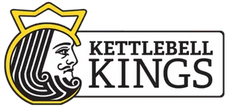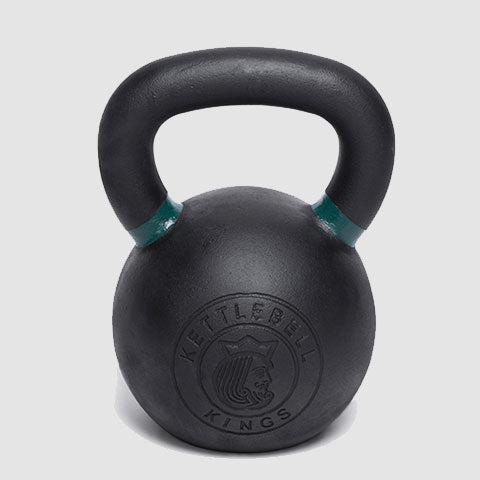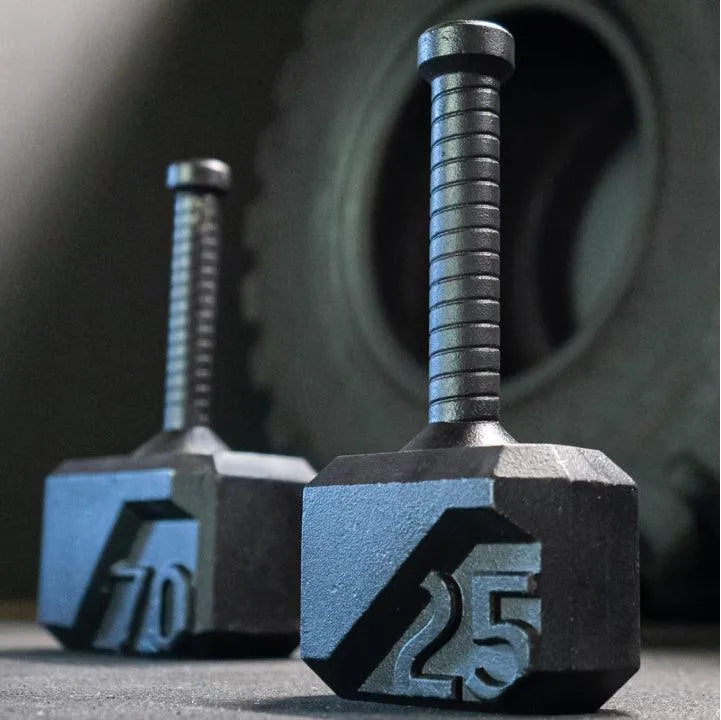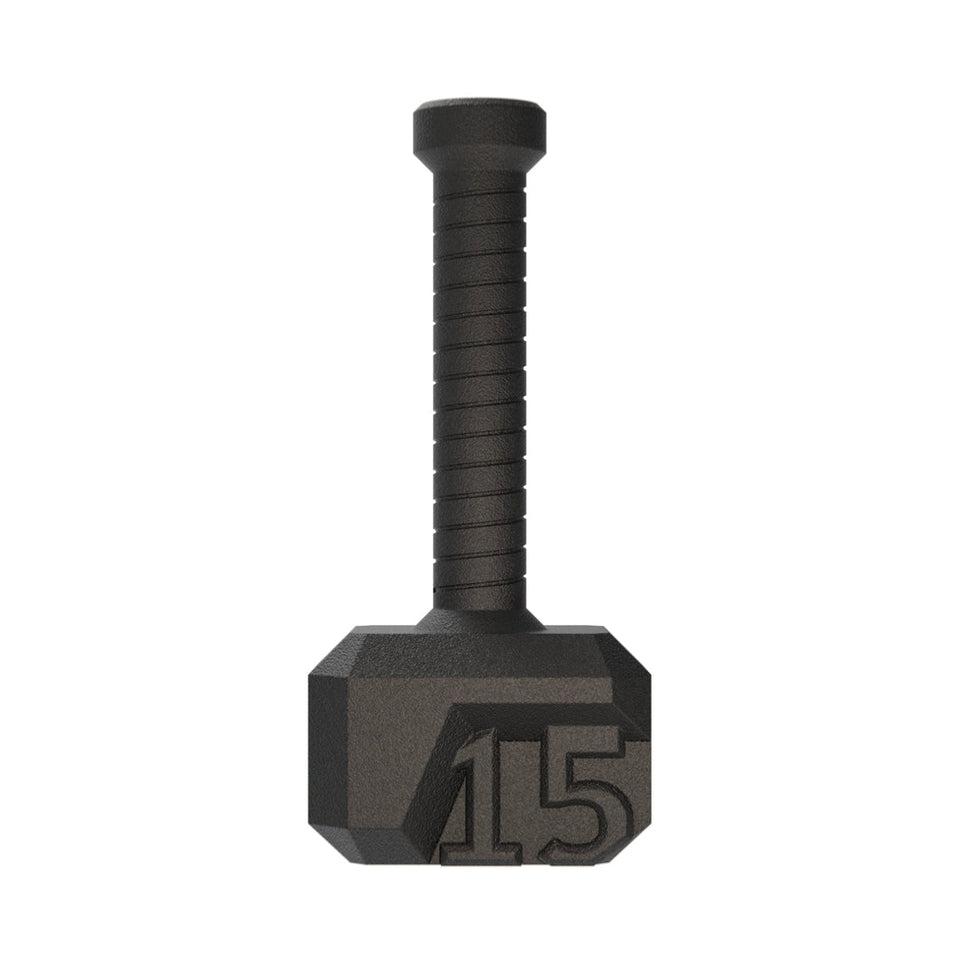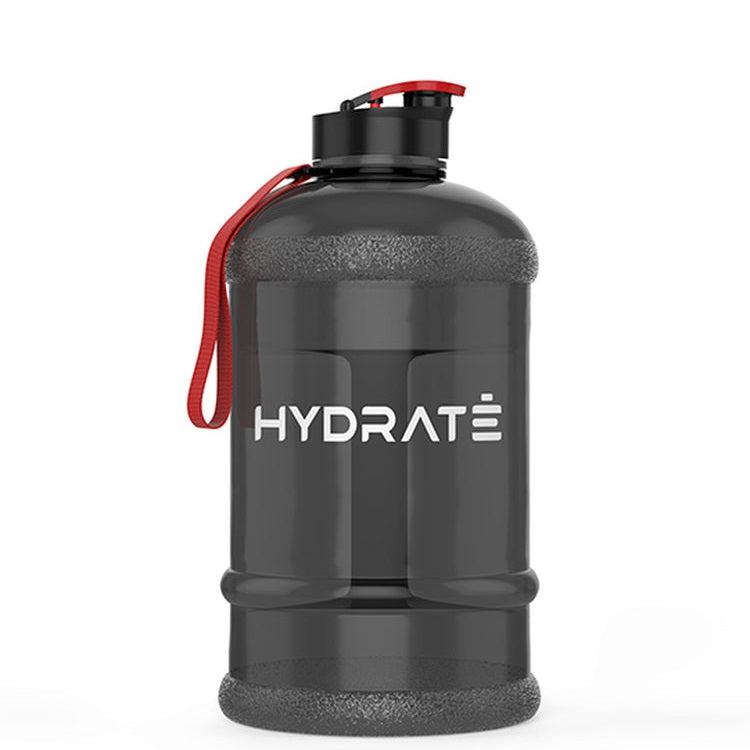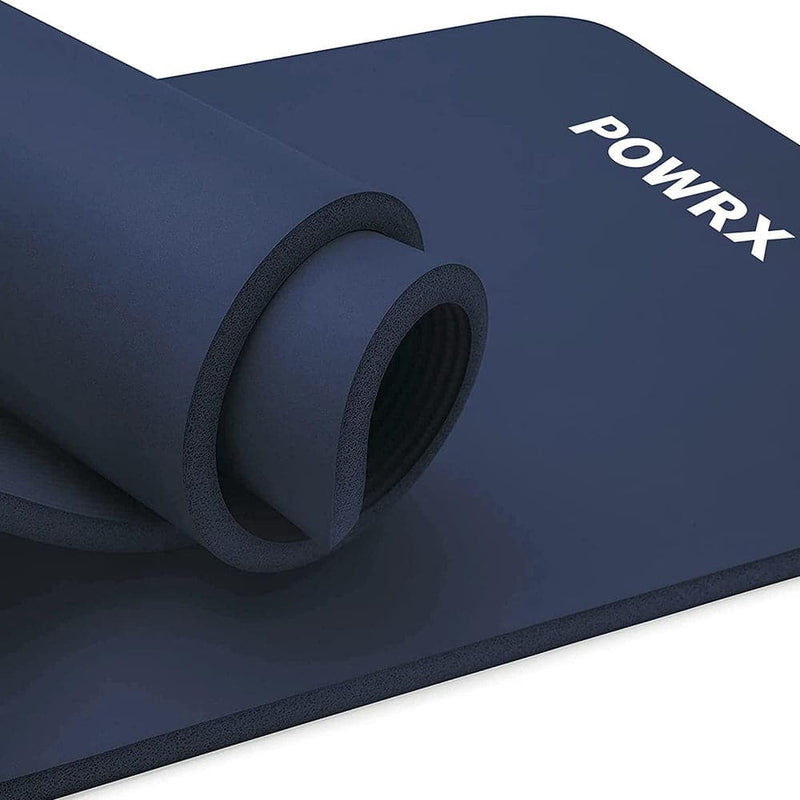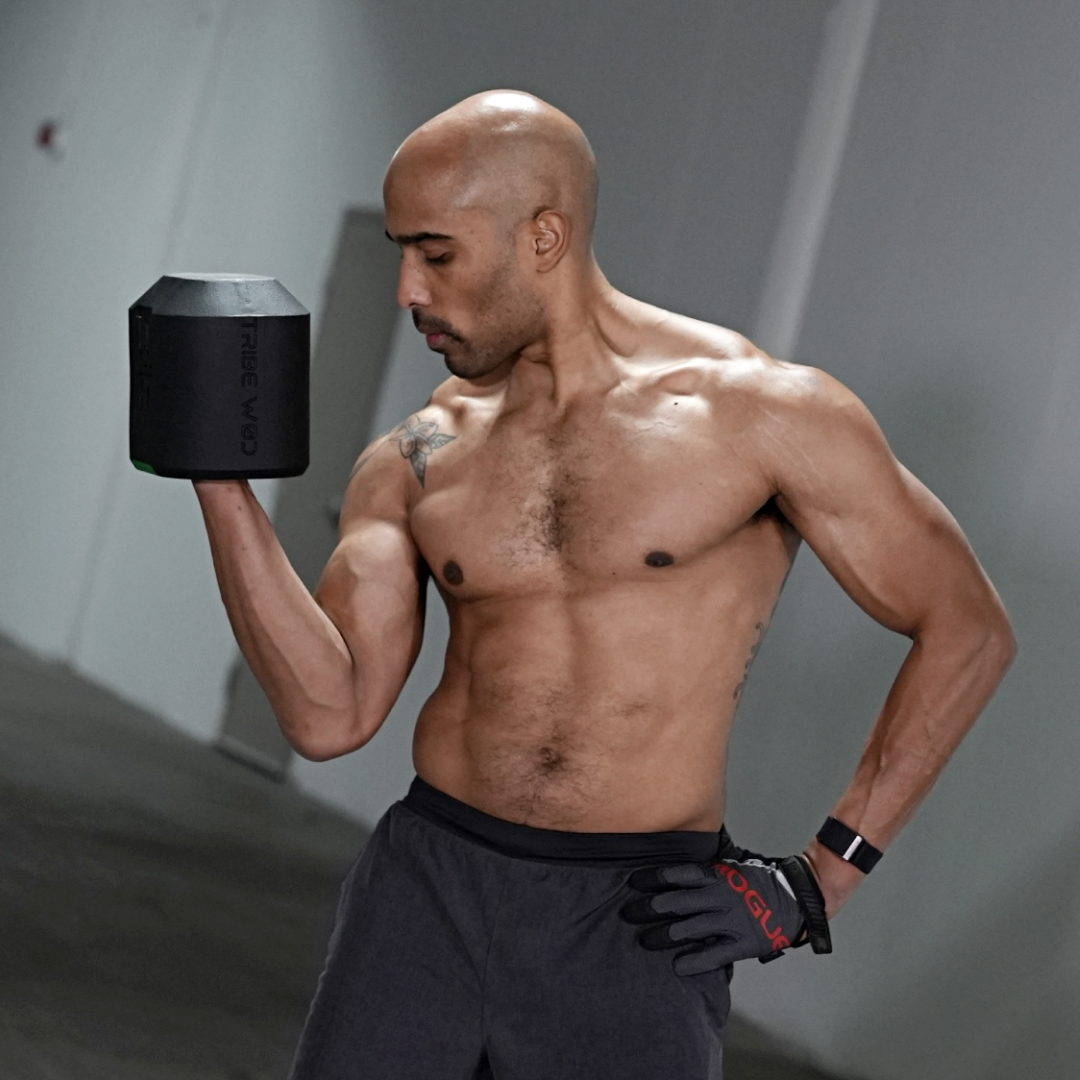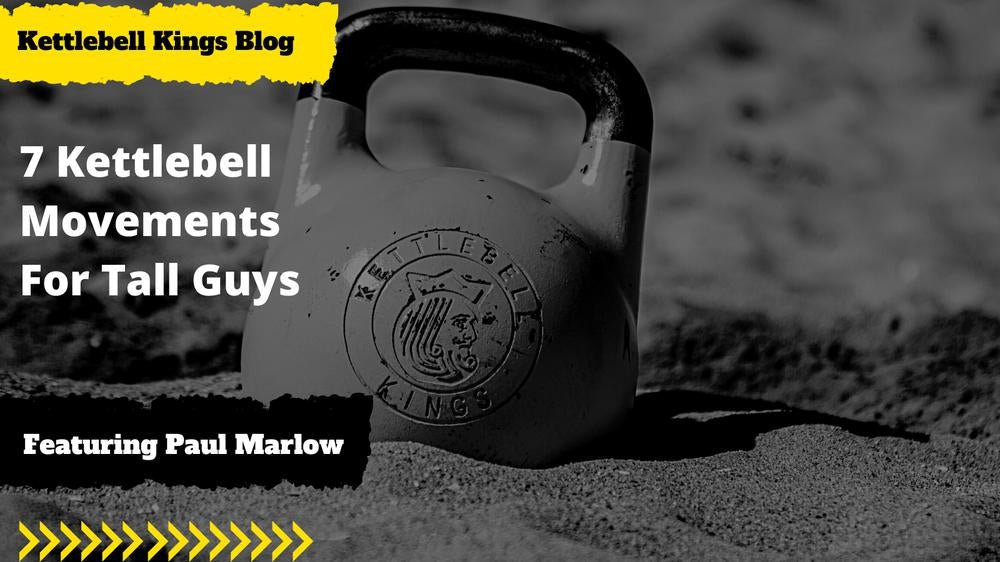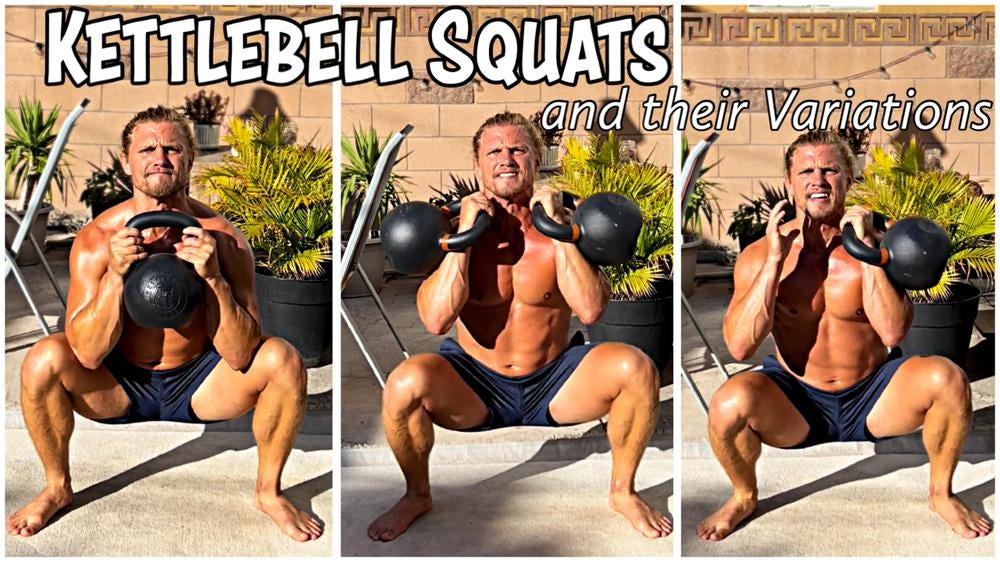The kettlebell swing is an important exercise in the continuum of kettlebell lifts. Not only is it beneficial on its own, but it is also a foundational exercise for other kettlebell ballistic movements such as the clean and the snatch.
The swing is a multi-joint exercise that actively involves much of the posterior chain or your backside muscles and requires assistance from the upper extremity for proper performance, especially the grip.
Additionally, the swing can be used to train and develop:
- multiple facets of strength
- stability and joint control
- coordinated movement between lower and upper body
- Improved rate of force production (power)
To perform this exercise, all you must do is:
- Stand with feet shoulder width apart and the kettlebell approximately 6-8 inches from the body.
- Assume the hip hinge position and make sure that the spine stays neutral (not overly flexed or extended)
- Grip?
- Perform a backswing by pulling the bell through the legs
- Drive through the feet and explosively move to a standing (lockout) position
- Imagine that you are performing a vertical plank in the standing (lockout) position.
- For the purposes of a basic swing, the bell should end up somewhere around chest height.
- Allow the bell to “drop” under control, guide the bell through the legs performing another hip hinge plus backswing to prepare for the next rep.
- Repeat
- The set is complete when the bell is “parked” or placed down safely back at the initial starting position.
It’s important to master this movement before moving on to more challenging drills, but that’s often easier said than done. It can be difficult to not try different exercises to up the intensity and counter boredom and monotony in training
So how does one go about training the swing to continue learning the pattern while doing something both progressive and challenging?
Consider using elements of the NASM-OPT™ (Optimum Performance Training) model. OPT is a training framework and system which emphasizes restoring and/or improving movement quality as the foundation from which to optimize muscle, strength, and power development, while enhancing resistance to injury. It’s not uncommon for exercisers of all ages, levels, and abilities to have some movement challenges, either from inactivity, or a lack of variability in training, movement patterns, or activities.
The model is divided into three levels which are stabilization, strength, and power. These levels are divided into 5 phases, but for the purposes of the article we’ll stick to the three primary levels.
The goals of the stabilization level are to learn ideal movement patterns, develop muscular endurance and to also develop postural awareness and control. Normally this level requires one to practice with relatively slower tempos, focusing on slow eccentric movement and isometric pauses so that 1) the body learns how to effectively decelerate forces acting on it and 2) to learn optimal posture and mechanics while performing the skill. With that objective in mind, it is important when training kettlebell movements to “own” the lift, spending as much time as necessary working with one exercise until the postural cues, appropriate application of force, and timing of the lift are all internalized. You also must explore the technique to find opportunities within the kettlebell-specific movements to honor the isometric pauses.
In the strength level it is important to build upon the adaptations and foundational skills that were gained in the stabilization level, but now we have the additional goal of further enhancing the body’s ability to produce force. There are a variety of programming schemes that can be used to accomplish this.
Finally, in the power level we want to build upon the adaptations of the strength level and enhance the rate of force production, or ability to generate force quickly. Per the OPT model, this is accomplished using contrasting loads by performing a heavy resistance exercise followed by a higher-speed exercise with similar movement mechanics, such as a set of heavy deadlifts followed by a set of explosive single-arm swings.
Another fun drill to consider for power endurance development is tempo training. We’ll think of power as a function of Work/time. In this example, pick a ballistic lift such as a swing variation or a snatch. Establish a cadence, or the number of reps to be performed in each set. For example, you may establish (after a test) that your target tempo is 15 reps in 30 seconds. Simply train using this cadence for the desired number of intervals and work to rest ratio. Be sure to respect the adaptation that you are developing and stop when the tempo drops off, i.e., you’re unable to perform the target reps within the allotted time.
Let’s put kettlebell training and the OPT model into practice with some simple training sessions built around the kettlebell swing.
Stabilization Level
You’ll recall that in the stabilization level, one of the requirements is to train with a slow tempo. This may be accomplished by using a swing variation called the “dead-start” swing. To do this variation, you’ll perform a swing. As you return to the hip hinge, allow the bell to stop safely on the floor at your start position, and hold the hip hinge position for 5 seconds. This is one repetition. Adjust the posture as necessary, during the pause, and repeat until done.
In the following session, you’ll warm up between 5-10 minutes. When doing self-myofascial techniques/SMT and static stretching, focus on muscles that you’ve identified, through an assessment, as being “tight” and spend about 30 seconds on each area. For dynamic stretching exercises, pick stretches that ideally mimic the activities that you’ll perform.
In addition to the dead start swings, you will perform an assisted pullup using the ladder technique. Loop a heavy (2-3”) giant resistance band on the pullup bar. Safely place one foot in the loop and perform the exercise. Ideally, the pullup should feel like you’re carrying an estimated 60% of your body weight.
The ladder simply involves breaking up the volume of a set of exercises into smaller “mini-sets” in the example below, a ladder of 3 means you’ll do a mini-sets of 1, 2, and 3 for a total of 6 reps. It’s a nice way to build volume, focus on optimal technique, and without building a ton of fatigue. When performing this stabilization level workout, honor the tempo and pay attention to your fatigue. If you are beginning to lose the ability to maintain your posture, end the session for that day.
|
Stabilization Level |
||||
|
Block |
Exercise |
Sets |
Reps |
Notes |
|
Warmup |
SMT Static Stretch Dynamic Stretch – * Hip Hinge w/ balls of feet elevated *Wide Child Pose or |
SMT & Static Stretch 1 set Dynamic Stretch 1 set |
SMT & Static Stretch 30 sec/area Dynamic Stretch 8-10 reps |
|
|
Core |
|
1 set each exercise |
|
|
|
Resistance |
|
3 sets |
|
|
|
Athlete’s Choice |
Choose additional corrective exercises as determined through assessment. |
|||
|
Cool Down |
Repeat SMT and Static Stretching |
|||
Strength Level
In this level, we’ll use the double kettlebell swing, the overhead press, front squat, and bent over row in a complex. Complexes require the athlete to combine 3-5 exercises and perform them consecutively in one uninterrupted set. This is perfect for strength-level training because complexes give the athlete increased training volume, and more time under tension which may be useful for muscular development.
When you practice the complex, initially use bells that you can press and squat for 8-12 repetitions. With that weight you will perform 3-5 repetitions for each exercise and 3-5 sets of the complex. The following is how complexes are written in your training template:
5 reps (2KB swing DSW + Overhead press OHP + Front Squat FSQ + Bent over row BOR) x 3 sets
(Note: To get the bells to the rack position, you will have to perform a clean)
|
Strength Level |
||||
|
Block |
Exercise |
Sets |
Reps |
Notes |
|
Warmup |
SMT Active Stretch Dynamic Stretch – * Hip Hinge w/ balls of feet elevated *Wide Child Pose or |
SMT & Static Stretch 1 set Dynamic Stretch 1 set |
SMT & Active Stretch 30 sec/area Dynamic Stretch 8-10 reps |
|
|
Core |
|
1 set each exercise |
|
Controlled tempo |
|
Resistance |
5(DSW + OHP + FSQ + BOR) |
3 sets |
5 reps per exercise |
Rest 1:30-2:00 between each complex |
|
Athlete’s Choice |
You may do additional single-joint exercises as desired to enhance physique |
2-3 sets |
6-10 repetitions |
Consider using lower intensity weights due to the demands of the complexes in the previous block |
|
Cool Down |
SMT, Static Stretch |
|||
Power Level
Finally, you’re going to work on your rate of force production. For the first drill, you’re going to do a superset using relatively heavy deadlifts and a set of fast swings. The idea is that with the heavy lift you may recruit your larger muscle fibers. After these fibers are activated, you’ll potentially train them to fire faster with the swings. The abbreviation TRM means “Training one-rep maximum.” Using the TRM may be preferred due to the feasibility and risk versus reward to testing a true 1 RM. The TRM may be estimated from a comfortable 3-5 RM set. For example, perform either 3 or 5 rep sets to a comfortable stop. Take the 5 RM weight and multiply it by 1.15 to estimate your 1 RM, then multiply that result by 0.85 to establish your 85% TRM (for the 3 RM weight multiply by 1.1 to get your 1 TRM estimate). While not exact, it can get you in the range of a poundage that it suitable for that adaptation. If you don’t want to do the math, use this 1RM calculator here: https://nasm.org/resources/one-rep-max-calculator
|
Power Level |
||||
|
Block |
Exercise |
Sets |
Reps |
Notes |
|
Warmup |
SMT Dynamic Stretch – * Hip Hinge w/ balls of feet elevated *Wide Child Pose to Face Up Dog Combo *Goblet Squat |
SMT 1 set Dynamic Stretch 1 set |
SMT 30 sec/area Dynamic Stretch 8-10 reps |
|
|
Core |
*1/2 Getup |
1 set |
5 per side |
You may do additional core work with the 1/2 GU after the “resistance” block |
|
Resistance |
A1) Deadlift A2) Swing |
3 sets |
A1) 3-5 85% TRM A2) 10 (as fast as possible) |
Stop if the speed of the swing slows down or it becomes difficult to maintain your posture throughout the superset |
|
Athlete’s Choice |
More ½ Getups |
|||
|
Cool Down |
SMT Static Stretch |
|||
In the final Power drill, we’ll focus more on Power Endurance using Tempo Training. The objective here is to do a ballistic kettlebell exercise using intervals over a block of time. For example, you may do a 15 second interval (1:3 work:rest) for 30 minutes. To determine your cadence, you’ll do your target exercise for an “all-out” one-minute set after an appropriate warm-up. Multiply your score by the percentage of the target interval time to get your cadence. For example, (and for simplicity) assume you did a set of 40 swings in your one-minute test set. Multiply 40 by .25 and you’ll get 10 reps. 10 reps of swings is now your cadence for an interval of 15 seconds. Using the 1:3 work to rest ratio you’ll swing for 15 seconds and rest for 45 seconds. Plan on starting out with a modest training time such as 10 minutes. Wave your training sessions in 2-minute jumps until you reach 30 minutes of total training time.
For example,
- Session 1 – 10 minutes
- Session 2 – 12 minutes
- Session 3 – 14 minutes
- Session 4 – 16 minutes
- Session 5 – 12 minutes
- … continue until you hit the 30-minute target.
It’s recommended that you keep the 15 second work interval and simply compress the rest period and start over at 10 minutes. When doing a 1:3 interval feels easy, start over at a 10-minute session, with a 1:2 interval. Once you can do the equivalent of a 2:1 interval with the current weight and cadence, test again.
Please acknowledge the “stop signs” for this sort of work.
- If your speed slows down i.e., if you miss your target cadence, stop
- If your form gets compromised, stop.
- If you fail the talk test, stop.
|
Power Level – Tempo Swings |
||||
|
Block |
Exercise |
Sets |
Reps |
Notes |
|
Warmup |
SMT Dynamic Stretch – * Hip Hinge w/ balls of feet elevated *Wide Child Pose to Face Up Dog Combo *Goblet Squat |
SMT 1 set Dynamic Stretch 1 set |
SMT 30 sec/area Dynamic Stretch 8-10 reps |
|
|
Core |
*1/2 Getup *Single-leg hinge |
1 set |
5 per side |
You may do additional core work with the 1/2/ GU after the “resistance” block |
|
Resistance |
Two-arm Kettlebell Swings |
12 minutes 1:3 work/rest ratio 15 seconds swings: 45 seconds rest |
10 RM Cadence (based on test) |
Stop if the speed of the swing slows down or it becomes difficult to maintain your posture throughout the superset |
|
Athlete’s Choice |
More ½ Getups |
|||
|
Cool Down |
SMT Static Stretch |
|||
We’ve just covered brief examples of how the kettlebell may be used within the NASM-OPT™ model in the development of enhanced stabilization, strength, and power. This requires that the lifter understands the demands and adaptations of each level as well as the ideal form, regressions, and progressions of the target lift to remain in alignment with guidelines of each level of the model.
With creativity, patience, and focused work, one may integrate kettlebell specific programming successfully within the NASM-OPT™ model.
